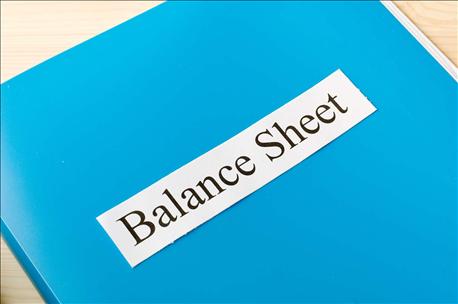
With the ag economy facing challenges and many operations seeing their working capital positions tighten, there is no better time to examine all expenditures. Two of the biggest hits a balance sheet can take is family living expenses that have ballooned, and not properly tracking principal payments and asset depreciation.
Pay your family a salary
Families tend to keep an eye on large expenses, like home mortgages and car payments, but all costs of living including groceries, clothes and other everyday expenditures should be tracked. Over time, seemingly inconsequential costs can make a dent in your balance sheet.

Two of the biggest hits a balance sheet can take is family living expenses that have ballooned, and not properly tracking principal payments and asset depreciation. (Photo: c-George/Thinkstock)
A better method for controlling the cost of family living is to think of your family budget as a salary paid out from the operation. Cut a single monthly check to the family, separate from all operational expenses. This way, the cash your family has on hand is finite and it’s also easier to track how much your family spends annually.
Tracking principal payments and asset depreciation
Farmers are good at tracking the money that comes in and goes out, with the goal of filling out tax returns and farm income statements. However, there are non-deductible costs that won’t appear on any end-of-the-year tax forms, but will still affect your bottom line, including your principal payments and asset efficiency.
All term debt principal payments are paid from cash left over after living and income taxes are paid. Operations can show taxable income and net earnings after income taxes and living is paid, but cash flow is negative. This negative cash flow transfers directly back to the working capital on the balance sheet.
Additionally, if you choose to pay cash for any capital assets, 100% of the cash used for the purchase reduces working capital.
Another item to watch for: If you purchased a new tractor and chose to fully depreciate it in the purchase year using the IRS Section 179 Deduction, but borrowed money to buy the tractor, you may have reduced your ability to manage your tax expense the following year. As an example, assuming $75,000 of section 179 depreciation was used when the tractor was purchased, you gave away your depreciation tax shelter and now must generate enough net earnings to cover the principal payment on the loan going forward.
If you’re noticing your working capital position or margins declining, assess the above scenarios. This situation can be a key indicator something isn’t adding up in your operation’s finances. It could be family living expenses or the relationship between your principal payments and asset depreciation.
The opinions of the author are not necessarily those of Farm Futures or Penton Agriculture.
About the Author(s)
You May Also Like




